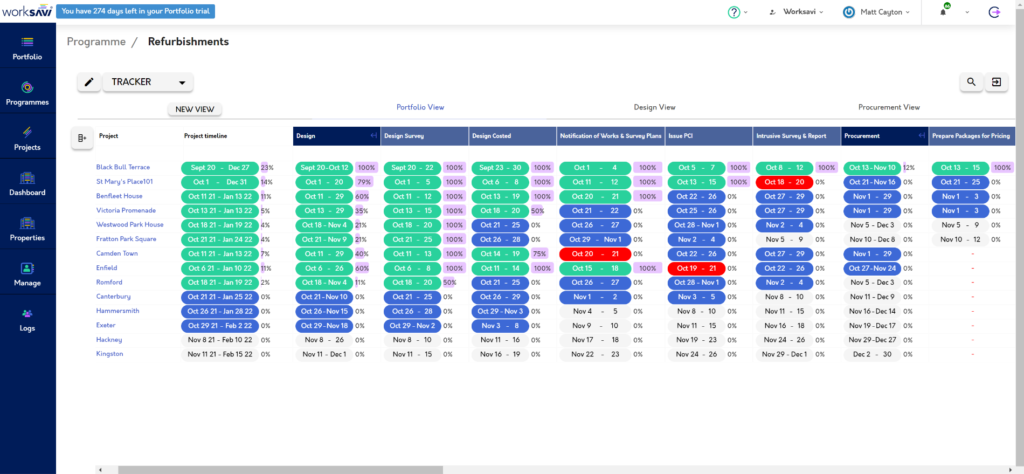The Hidden Costs of Inefficiency in Your Business
Inefficiency in a business can prove costly. And often, the source of these inefficiencies are not immediately obvious. Being able to identify the source of the problem is the first step in trying to find a solution. Let us look at some of the most common problem areas that managers often overlook.

Task Duplication
When different units and departments in a business use separate systems or multiple spreadsheets, there is often the problem of duplicate data entry. Employees waste time entering data that already sits on another system or file, and the same data may need to be entered multiple times, when they could be engaged in more revenue-generating tasks for the business.
Diverted Expertise
Businesses recruit certain employees for their specialised field of expertise and pay them handsomely for this. Those in the IT sector, and particularly project management roles, tend to fall under this category. Many businesses however suffer some revenue loss when such specialists are compelled to carry out basic tasks that are well below their pay grade rather than dealing with the complex issues they were hired for.
Compromised Quality
Businesses that utilise outdated machinery and technology may also have unhappy employees. The combination of these two issues will lead to problems of poor product quality. More so when you also have poor quality control processes that do not capture problems in production in good time. When a bad product goes out into the market, it can damage the reputation of the business, costing it clients and revenue.
Time Wastage
As said, there is revenue loss when employees are engaged in tasks they do not need to be doing. A survey conducted by OnePoll found that as much as 26% of an employee’s day is wasted attending to unnecessary tasks like going to needless meetings, carrying out low-level tasks, creating reports and struggling with obsolete technology.
Invoicing
Customers need to be invoiced promptly for products and services employed, the process should be quick and efficient. There are however often delays, especially where manual processing is used. When you have such delays, it can affect cash flow for your business. This can interfere with the smooth running of the business when capital is not available and cash flows are impacted.

Recruitment Costs
When an employee leaves their job, it is an added expense to the business. Not just because they need to be paid some severance or benefits, but because they need to be replaced. There are costs associated with having to recruit a new team member. There needs to be an advertisement of the position, interviews, background checks, and training. It may also take a while for the new employee to catch up to the rest of the team, meaning the business will not get the benefit for a while yet.
Technology Will Lead the Way

Technology can play a big role in helping organisations identify inefficiencies and resolve them. For instance, upgrading to an automated system for invoicing can help improve the timing of payments from clients and support the business to have sufficient liquidity on hand to meet its other obligations on time. Upgrading technology and machinery can also be a boost to employees as they get to learn new technical skills and feel they are developing in their careers.
To avoid specialists being diverted from more important work, the company can help to improve the quality of training for all employees when on-boarding and as part of their ongoing development. From how to use integrated systems to preventing malware incursions, it is advisable to raise the competencies of your team so there is less overreliance on key employees for mundane tasks.
Employees have become increasingly dissatisfied in their jobs and a growing number have opted to quit before even having found another position. According to the US Bureau of Labour Statistics report, the employee turnover rate in 2020 was a staggering 57.3%. With 60-70% of turnover typically being voluntary, this means at least a quarter of employees willingly chose to leave their jobs.
Some of the most common reasons cited for the decision to quit are burnout, lack of flexibility, and micromanagement. The problem has worsened as employee shortfalls occur and those left behind are overworked to compensate. This has led to poor management and a challenge that threatens to spin out of control. Organisations can help themselves by implementing technologies like WorkSavi’s project management software that allows them to be more aware of their resource utilisation and therefore able to manage the workloads of individual team members more effectively.
Using WorkSavi managers can quickly realise where an employee may be overwhelmed and seek to lighten their load. Tasks and projects can be re-allocated or rescheduled to suit the capacity and capability of the team. This can make the team more comfortable, they can deliver their workload more effectively with improved performance, and remain loyal to an employer who demonstrates empathy towards them. This attitude may help to reduce staff turnover rates and inefficiencies associated with having to recruit and train up replacements.
Technology can support teams and business in so many ways, from creating a single source of all data and ensuring only single entry of data, to process templates that projects can be repeatedly created from in an instant, to pre-defined reporting templates that are constantly being refreshed presenting real-time performance metrics across all business functions.
Integrated ERP systems can also be a big help in addressing the problem of duplication of tasks. With less time entering data, which is already in a shared system, employees have more time to focus on their core tasks. It also ensures there are no gaps in information, so employees can better communicate, coordinate internally, and resolve issues.
By eliminating inefficiencies, businesses can plug revenue leaks, refocus their employees on their core tasks, and ensure a smoother and more profitably run operation. Organisations need to look into these hidden areas of waste and seek to modernize their operations for better performance.


